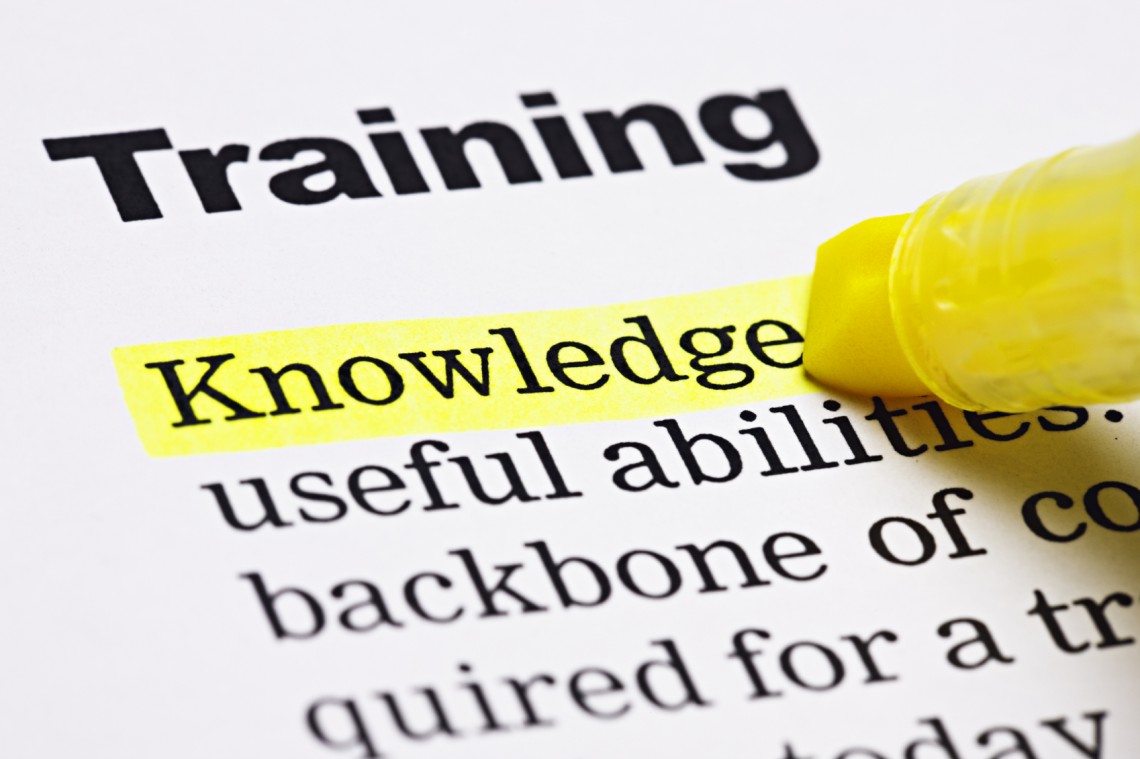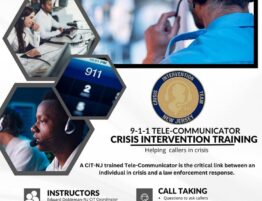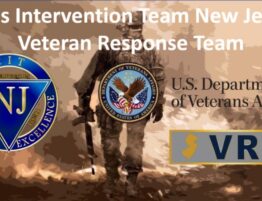
A new style of training for police recruits emphasizes techniques to better de-escalate conflict situations.
BURIEN, WASH. — The police recruits arrived in pairs in the woods outside Seattle. For days, they had been calming their minds through meditation and documenting life’s beauty in daily journals. Mindful and centered, they now faced a test: a mentally ill man covered in feces and mumbling to a rubber chicken.
The feces was actually oatmeal and chocolate pudding, the man was another recruit, and the goal of this mock training exercise was to peacefully bring him into custody. The first recruits approached gingerly, trying to engage the man in conversation. When that failed, they moved in and wrestled him to the ground.
“We needed to find a way to help him. He obviously had a screw loose,” said Aaron Scott, a cadet from Bellevue, Wash. Scott briefly considered using his baton, he said. “But I thought that might be too much.”
For the past three years, every police recruit in the state has undergone this style of training at the Washington State Criminal Justice Training Commission, where officials are determined to produce “guardians of democracy” who serve and protect instead of “warriors” who conquer and control.
Gone is the military-boot-camp atmosphere. Gone are the field exercises focused on using fists and weapons to batter suspects into submission. Gone, too, is a classroom poster that once warned recruits that “officers killed in the line of duty use less force than their peers.”
“If your overarching identity is ‘I’m a warrior,’ then you will approach every situation like you must conquer and win,” said Sue Rahr, the commission’s executive director. “You may have a conflict where it is necessary for an officer to puff up and quickly take control. But in most situations, it’s better if officers know how to de-escalate, calm things down, slow down the action.”
Training is at the heart of the national debate over police use of force. So far this year, police have shot and killed more than 900 people, according to a Washington Post database tracking such shootings — more than twice the number recorded in any previous year by federal officials. Anti-brutality activists and some law enforcement leaders argue that if police were better trained to de-escalate conflict, some of those people might still be alive.
Rahr, the former sheriff of King County, is one of the nation’s foremost authorities on this type of training. In April, the Harvard Kennedy School published a report she co-wrote, “From Warriors to Guardians: Recommitting American Police Culture to Democratic Ideals,” which warns that too many academies are training police officers to go to “war with the people we are sworn to protect and serve.”
The President’s Task Force on 21st Century Policing, of which Rahr is a member, has embraced many of these principles. In August, the Police Executive Research Forum, a law enforcement think tank, followed suit.
“The goal of the guardian officer is to avoid causing unnecessary indignity,” said Seth Stoughton, a law professor at the University of South Carolina and a former police officer in Tallahassee. “Officers who treat people humanely, who show them respect, who explain their actions, can improve the perceptions of officers, or their department, even when they are arresting someone.”
Not everyone is on board. Some accuse Rahr of promoting a “hug-a-thug” mentality that risks getting officers killed. About 20 percent of Rahr’s staff quit or was fired in the first year after rebelling against her reforms. Even today, Rahr estimates that two-thirds of the state’s 285 local police chiefs are either skeptical of her training philosophy or “think this is just dangerous.”
Alexis Artwohl, a former police psychologist and consultant to the International Law Enforcement Educators and Trainers Association, would not comment on Rahr’s work but is skeptical of some guardian-style training. Artwohl has co-written a book on deadly force whose promotional blurb begins: “In a cop’s world it’s kill or be killed.”
Artwohl compares police work to defensive driving, which is about “expecting something bad is going to happen. It’s not about dealing with normal traffic flow.”
“We should go out there and expect something bad will happen and watch for it,” she said. “If we are not paying attention, we could die.”
Samuel Walker, a national expert on police training, said the two approaches have long been present in American policing. But the debate over which should dominate has intensified in the past year, since protests erupted over the fatal shooting of an unarmed black teenager by a white police officer in Ferguson, Mo.
“There is war going on for the soul of policing in America,” Walker said. “The outcome is uncertain.”
Conflicting conclusions
As it stands, most police academies adhere to a militaristic style of training that emphasizes battle. That training then becomes its own defense when someone dies or is grievously injured at the hands of police.
Take the case of Brian Torgerson, a Seattle man suffering from schizophrenia who had assaulted his father and had an outstanding petty-theft warrant. His parents called police in 2010, before Rahr instituted her reforms, hoping Torgerson, 45, would be committed to a mental institution.
Instead, two Seattle police officers went to Torgerson’s downtown apartment, grabbed his wrists without warning, knocked his feet out from under him and shocked him twice with a stun gun, according to police reports and eyewitness testimony.
Torgerson’s face was beaten and covered with a mask that quickly filled with his blood and vomit. His hands were cuffed behind his back; his were legs bound. Thirteen additional officers arrived, and at least five of them took turns holding him down as he yelled, “Help me!”
When Torgerson stopped breathing, two officers stayed on top of him, fearing he was “playing possum.”
Torgerson survived but emerged from the hospital three months later with severe brain damage. In sworn statements, the officers defended their actions, saying they had followed the dictates of their training.
Darrell Ross, a national expert hired by the city to aid in its legal defense, reached a similar conclusion. In his expert report, Ross wrote that the arrest reflected standard techniques, that the officers’ training was “outstanding” and that the tactics they used “were not excessive.”
The Justice Department came to a different conclusion. In a 2011 report, Justice officials said that Torgerson’s civil rights had been violated and that poor training played a central role.
“This outcome,” the report said, “could have been averted.”
‘That male swagger’
The roots of this hyper-aggressive style of policing reach back to the turbulent 1960s and 1970s, when federal and local officials declared a “war on drugs” and promised to get “tough on crime,” according to police training experts.
In 1967, the Los Angeles Police Department created the nation’s first SWAT team, a group of elite marksmen who specialized in high-risk tasks, such as hostage rescue and drug raids. Soon, even small towns with low crime rates were creating these special weapons and tactics units, swapping out their traditional blue uniforms for black military-style SWAT gear.
“That testosterone, that male swagger — it was contagious,” said John Mutz, a former LAPD captain who retooled the department’s training protocol in the aftermath of the beating of motorist Rodney King by four city officers in 1991. “SWAT became this recruiting tool for those so-called men looking for adventure. It infiltrated the training.”
In the 1980s, the rise of the ultra-violent crack-cocaine trade and the increasing availability to criminals of military-grade weapons fueled police paranoia. In 1986, two FBI agents armed with six-shot revolvers died in a shootout near Miami with bank robbers armed with more powerful weapons, including a semiautomatic assault rifle.
By the 1990s, officers, too, had access to semiautomatic rifles, and semiautomatic handguns had replaced revolvers on police duty belts. Metal batons, stun guns and pepper spray were also added, bringing the weight of the belt, once about 7 pounds, to nearly 20 pounds, police experts said. Increasingly, training came to focus on strategies of attack.
“It used to be an officer had a flashlight, maybe a nightstick, and their hands and mouth. They learned to be good with their verbal skills,” said Mark Lomax, executive director of the National Tactical Officers Association. When “you add equipment to an officer’s belt, they will be prone to using it.”
Then came King’s beating, one of the first incidents of police brutality to be captured on video. The officers were charged with felony assault but acquitted by a jury in 1992, sparking days of rioting and protests.
After the King beating and other high-profile incidents of police violence, some academies shifted to a community-policing model that focused on cooperative interaction with the public. But that movement was blunted after the terrorist attacks on the World Trade Center and the Pentagon in 2001.
“When 9/11 happened, it opened the floodgates to a more-aggressive style of training and police work. Now, we have to be vigilant at all times to threats from the outside,” Rahr said. “You have to be alert. Everyone is trying to kill you.”
‘Ask, Tell, Make’
Within months of the 9/11 attacks, federal grants shifted from community policing to homeland security. Paranoia over terrorism crept into training academies, textbooks and regional workshops.
Police across the country held tight to the “Ask, Tell, Make,” or ATM, protocol: Ask a citizen to do something, such as providing identification. Upgrade the request to a command if they don’t immediately comply. And use force if the command is not quickly followed.
Russ Hicks, one of Rahr’s trainers, said many police academies tend to skip over “Ask,” emphasizing “Tell” and “Make.”
“If someone doesn’t listen to what you say, you turn them upside down,” Hicks said.
To replace ATM, Rahr created LEED: “Listen and Explain with Equity and Dignity.” At the Washington state academy, recruits practice LEED during mock training drills in which they are expected to handle antagonistic suspects without losing their cool.
Sgt. Shanon Anderson reinforces that approach in her class on tactical skills by showing recruits a 2007 YouTube video of a Baltimore police officer berating a 14-year-old boy for skateboarding in the Inner Harbor area. The officer quickly becomes hostile and aggressive, throwing the teenager to the ground after the boy calls him “dude.”
“On a scale of 1 to 10, how important is emotional control?” Anderson asks the class. “It’s a 10. You have to work on it.”
The gentler philosophy extends to the treatment of recruits. There’s no more yelling, ridicule and physical punishment. And recruits are no longer required to stand at attention in a military brace when they encounter a staff member or a visitor. Instead, they are told to make eye contact and strike up a conversation.
“They were doing so much bracing, they couldn’t even get to the bathroom,” said Donna Rorvik, the training commission’s curriculum developer. “Sue wanted them to learn to talk to people.”
Even the most skilled negotiator must sometimes be a skilled fighter, and Rahr has increased training time spent on physical fitness, sparring and firearms. But those skills are often taught in nontraditional ways. In firearms training, for example, recruits are taught to breathe and meditate to reduce stress and improve accuracy.
The recruits say they appreciate Rahr’s philosophy, particularly transfers from other states who have experienced the alternative.
“I have to keep in mind: ‘You are not the big, bad highway patrol anymore,’ ” said James Thompson, who spent eight years as a Texas state trooper before signing on with police in tiny Tukwila, Wash. “It’s important to not be ‘all stick.’ It’s important to remember we are the voice to the people who don’t have voices.”
In the real world
Over the past three years, Rahr’s commission has trained about 2,000 new recruits and transfers, or about 20 percent of the 10,000 officers estimated to be working in local departments across the state. At that rate, she said, “it’s going to take a generation to establish a new culture.”
In the meantime, even departments that support the new model are finding it difficult to implement in the real world.
In Pasco, a migrant desert town of 77,000 in Southeastern Washington, Police Chief Robert Metzger said he endorses Rahr’s approach. And each year, he adds a handful of commission graduates to his 71-member force.
But Metzger also defends as unavoidable the four fatal shootings by his officers over the past two years. The latest, in February, drew national attention: Antonio Zambrano-Montes, 35, was unarmed except for the rocks he had been throwing at motorists and then officers.
A video of the shooting appears to show Zambrano-Montes raising his hands in surrender before officers fired the final shots. His cousin Delia Zambrano said the video reveals a desperate need for better police training, and local business leaders have asked the Justice Department to intervene.
“With these police officers, something did not click,” Zambrano said. “They just kept shooting.”
Metzger defended his officers’ actions, saying they were in grave danger and had to shoot because Zambrano-Montes was holding a softball-size rock.
“Adjustments” have been made to training, he said, and the circumstances of the four shootings have been added to firearms training drills. But Metzger said he isn’t sure any of those “tweaks” would lead officers to behave differently in the future.
“Could there be ways that we could have avoided it? It’s hard to say,” Metzger said. “Maybe. Maybe not.”
Ashley Balcerzak and Julie Tate contributed to this report.








